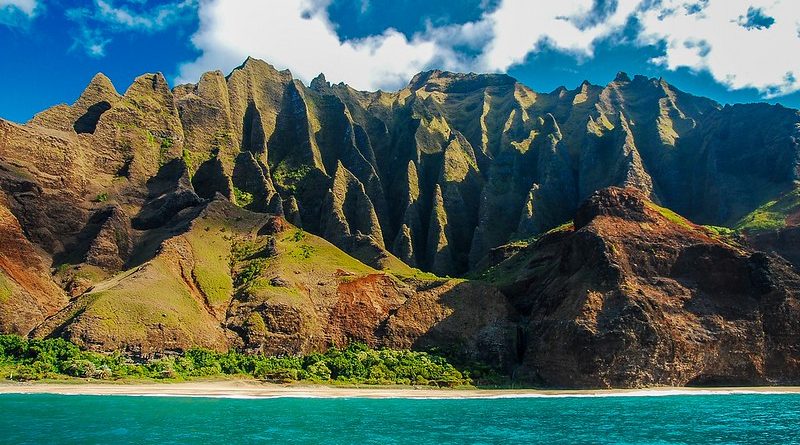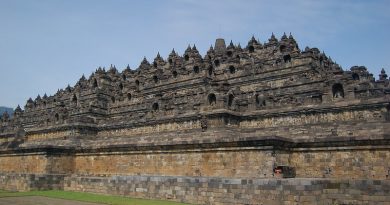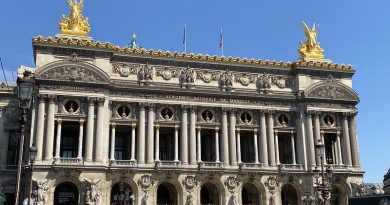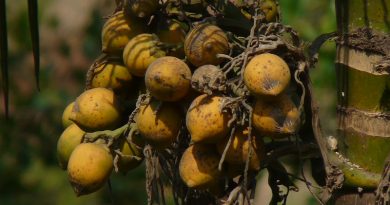HAWAII Backgrounder
The Hawaiian Islands, the 50th state of America, is the nation’s pride and a vacationer’s dream. Situated more than 2,500 miles (4,000km) from the nearest landmass, its geographical isolation has been in many ways both a blessing and a curse in ancient and contemporary times.
This geographical area, also known as the Hawaiian Emperor seamount chain, has seen island formation through volcanic activity for the last 80 million years. Hawaii, in fact, consists not only of eight major islands, whose breath taking nature we know too well from tourism billboards, the archipelago consists of no less than 132 islands in total (though 124 add up to only three square miles in land mass as they are mainly small reefs).
Life on the Hawaiian Islands could only evolve from spores and seeds that the wind carried over, corky fruits that drifted in the sea and were washed up shore, or an adventurous bird that come off course during a storm and crashing on the island never to leave. Even sea creatures would experience difficulties reaching the islands, as the North Pacific currents tend to push life-rich plankton away from Hawaii. Native marine mammals include whales, dolphins, manta rays and monk seals; the latter today on the brink of extinction with a population of only 1,300 left.
The pristine eco-system once found on the islands was a result of survival of the fittest and unique adaption skills to an environment that wasn’t necessarily welcoming to newcomers. The Hawaiian Islands began as a barren lava rock, yet today, they are lush with plants and teem with wildlife, though most of these species were introduced by the colonizers.
The ‘Aloha’ state has a very short and yet tumultuous history after its first discovery by seafaring Polynesian whose culture was established in the island group of Samoa and Tonga. The Polynesians had already colonized Tahiti and the Marquesas Islands in the first century AD, when around 300 AD, they dared a phenomenal 3,000 mile (5,000 km) ocean crossing on a journey of discovery in their twin-hulled voyaging canoes. The courage, stamina and no-less-than-brilliant sea navigation skills it took to master this journey, is no less than awe-inspiring. Their canoes could take up to 100 passengers plus crops and pairs of domesticated animals.
Early Hawaiians established an advanced and deeply spiritual culture on the islands, which for hundred of years developed only influenced by the Polynesian culture and steered solidly by the hands of powerful Polynesian chiefs. Though archaeological and anthropological evidence suggests that Spanish galleons arrived on the islands in the second half of the 16th century, about two hundred years before the British, and used it as a pit stop in their Pacific voyages between their Mexican and Philippine colonies, it is certainly the arrival of Captain James Cook that had repercussions reverberating through the islands until today.
The Hawaiian Kingdom that came out of the line of the Polynesian Chiefs was a Kingdom short lived and yet tremendously important in maintaining the indigenous culture and heritage against the tornado like impact of Western planters and missionaries arriving on the islands ever since the late 18th century.
The Kingdom was illegally overthrown by oligarchic Republicans in 1893 and the following annexation to US territory this is a historic development that the descendants of the Hawaiian Kingdom still battle with today.
As was the case in most colonies and occupied territories across the British Empire, there was little to no respect for indigenous culture and within two centuries the majority of historic and sacred sites was destroyed, the native population decimated by foreign diseases and marginalised by an influx of foreign workers coming to work on the plantations.
The foreign workers from Korea, the Philippines, Japan, and mainland America, helped form the bizarre multi-ethnical and tolerant population that today the state of Hawaii is very proud of. The majority of the 1.4 million inhabitants is clustered in the capital of Honolulu (making traffic there almost as bad as in New York or LA), yet native Hawaiians only account for 12.5% of the total population and their heritage co-exists next to a dozen foreign cultures that have brought their own religions, food and rituals.
Hawaiian native culture experienced a renaissance in the 1970s, a development that seems to only have gained momentum in the last decade. As the world is continuing its course into unknown territories with unprecedented challenges in the global, political, economic and environmental arena, more and more people are looking at indigenous people, their way of life, and their rites of passage in a world in which everything seems somehow connected.
Native Hawaiian culture is famous for its principles of caring for the land and it has become a leader in the slow food and farm to fork movement combining ancient spiritual principles with modern day contemporary cuisine.
Today, more than 6 million people visit Hawaii each year; tourism is without a doubt the main engine of the local economy. The Hawaiian Islands are at once the picture-perfect tourist destination with all the comfort and facilities one can think of, and simultaneously the wild, rugged, and ancient landscape that has sparked the imagination of explorers and adventurers since the beginning of time.
On Oahu one can find both within a couple of hours drive; it’s the island that draws the largest visitor crowd during the year; a tribute to its nickname ‘the Gathering Place’. Oahu’s north shores are serene and unspoilt and home to the world’s most amazing surfing competitions; Honolulu and Waikiki is modern day America with tropical beaches at its doorsteps.
The eight islands are often referred to as a family, in which all family members have uniquely different personalities, yet the same blood ties them together – the fierce power of lava. The Big Island, which is larger in size than all the other islands together, is home to one of the world’s most active volcanos, the crater of Kilauea on the Big Island of Hawaii, neighbouring Mauna Loa which just so happens to be overdue for an eruption too. Kauai, the oldest of the islands with 5.1 million years, and nicknamed the Garden Isle, was probably the least spoilt of all the islands until the arrival of Monsanto and GMO farming. Luckily, 90% of the island remains inaccessible due to its tropical rainforests, dramatic cliffs, pinnacles and craters.
Hawaii is a destination that can inspire . It is also a destination that encourages a traveller to think about the impact of mass tourism on a destination that has been coined ‘heaven on earth.
Here one can witness a clash of the ‘old’ versus the ‘new’ ways of living, the challenges of immigration and cultural integration, a history rife with injustice, and the question of how much power can money buy – or rather how many islands, .Lanai these days is 98% privately owned.




